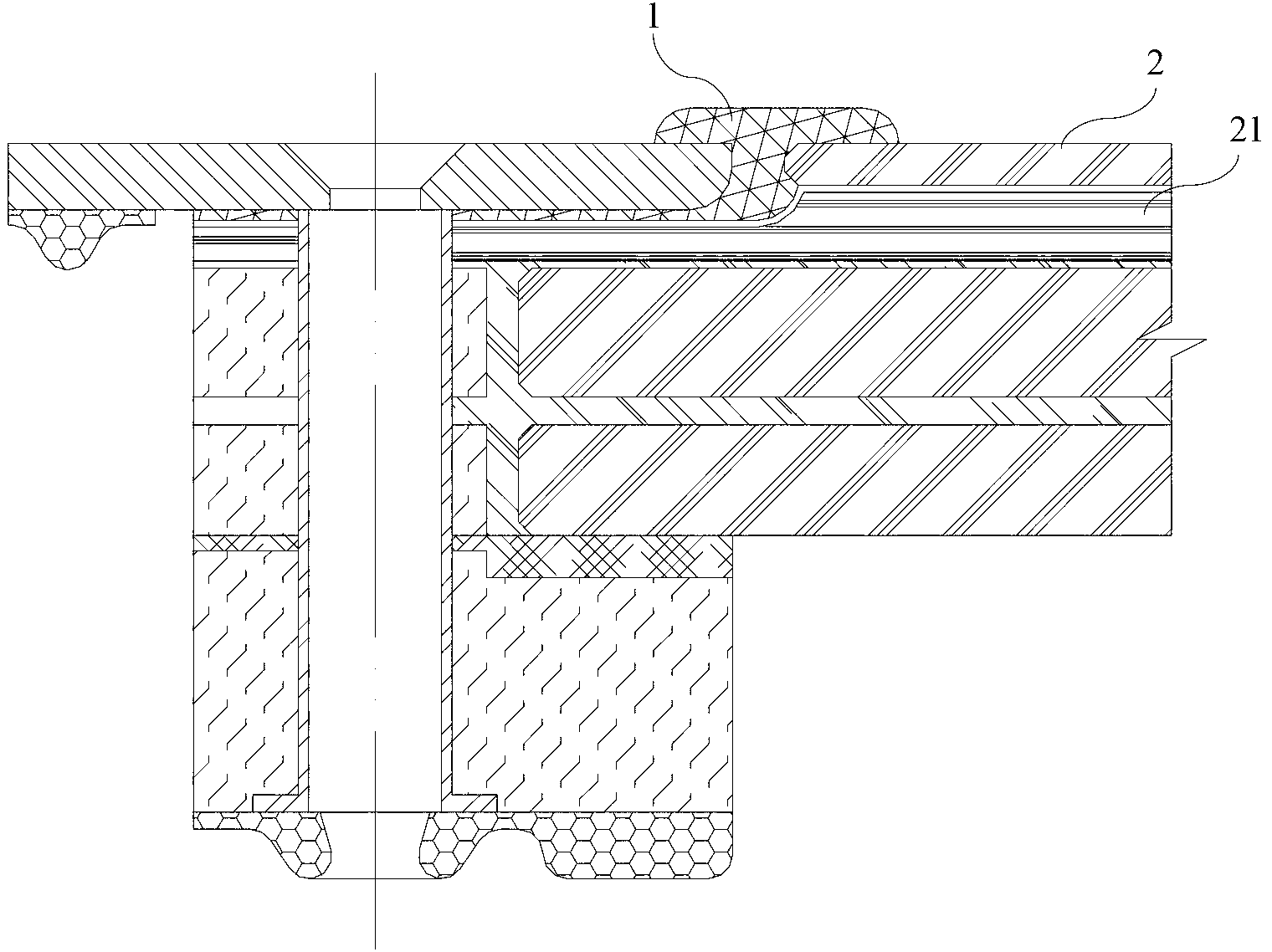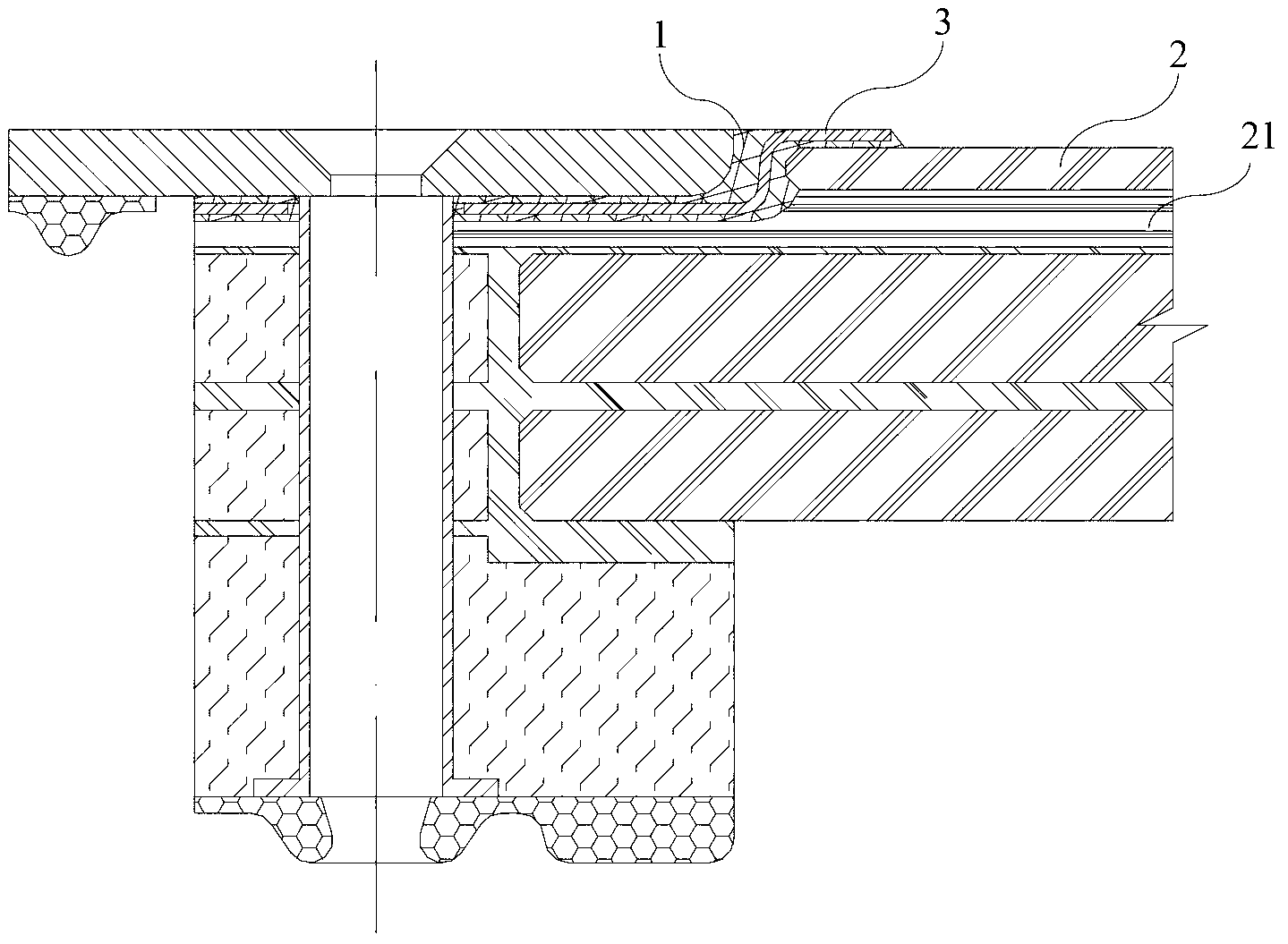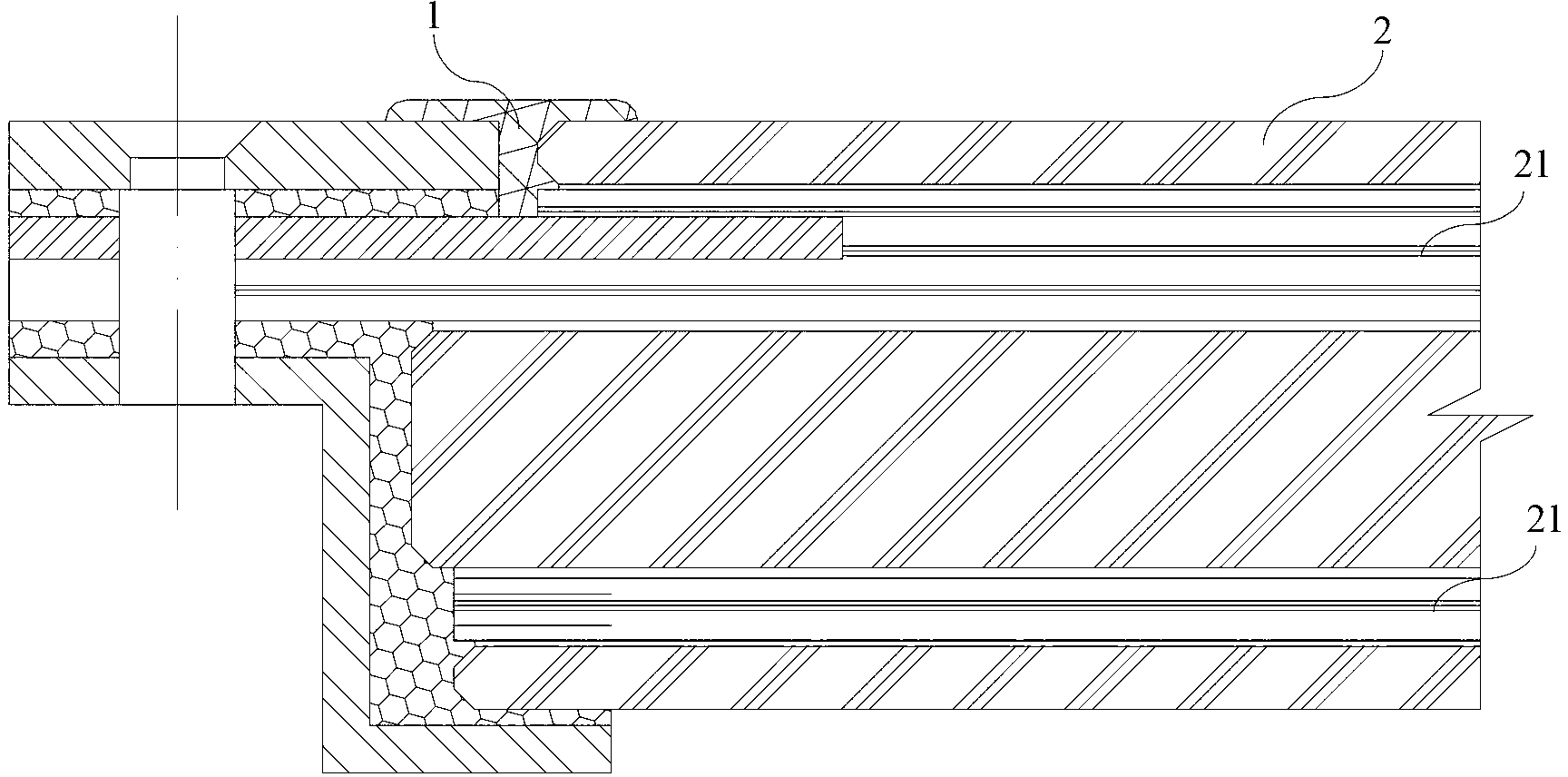[0005] 1. If Figure 1-Figure 2 As shown, when installing the transparent part 2, since the
sealant 1 is made of elastic material and the tightening force of each bolt is different, when the bolts are tightened, the aluminum
alloy frame will be pressed to deform the
sealant 1, and then the edge of the
sealant 1 will be torn A gap is formed between the sealant 1 and the transparent part 2, making it easier for
moisture to penetrate into the transparent part 2, corroding the transparent organic material interlayer (hereinafter referred to as the organic interlayer) 21 and the internal structure of the transparent part 2, accelerating its aging and failure, and This will lead to the degradation and
cracking of the internal interlayer, and even the separation of the glass and the interlayer, posing a major safety
hazard[0006] 2. If Figure 1-Figure 3 , Figure 5 As shown, opening a hole on the organic interlayer 21 of the transparent part 2 has already destroyed the initial
internal stress balance of the interlayer, and the vicinity of the hole becomes a weak link in strength, coupled with possible superimposed
processing defects and
assembly stress, the interlayer is very easy. Cracks are generated. Once encountering
foreign object impact or
aerodynamic load and
body vibration during use, it may cause the interlayer crack to expand or even completely rupture, causing the cabin to lose its security and cause danger.
[0007] 3. If Figure 4 As shown, although the installation structure avoids the
internal stress balance damage and
stress concentration problems caused by the interlayer
punching of the transparent part 2, the transparent part 2 cannot be firmly installed on the
fuselage frame. When the transparent part 2 is subjected to a
pressure difference When factors such as
temperature difference change or external
impact are affected, the structural
adhesive 1 becomes its only stable guarantee. As the structural
adhesive 1 continues to age, it will be difficult to withstand the above loads, and the transparent part 2 will fall off from the
fuselage frame, resulting in accidents.
[0009] 5. During the flight, due to the continuous increase of the internal and
external pressure difference, the transparent part 2 will produce outward arching deformation and directly tear the edge of the sealant 1, so that there will be a gap between the edge of the sealant 1 and the transparent part 2. As the number of flights continues to accumulate, the gap between the edge of the sealant 1 and the transparent part 2 will gradually expand until the sealant 1 fails, which will cause
moisture to continuously penetrate into the interior of the transparent part 2, corrode its internal structural
adhesive, and accelerate its aging; and fix the transparent The bolts of part 2 will also loosen due to repeated deformation of transparent part 2, which will reduce the service life of transparent part 2 and become a great safety
hazard[0010] 6. When the
polyurethane interlayer on the edge of the laminated transparent part 2 is eroded, it will change from transparent to milky white translucent, even yellow, cracked and delaminated, resulting in the conductive strips in the interlayer being stripped from the glass surface or even At the same time, an arc occurs at the junction between the inner edge of the conductive strip and the
heating film. The local overheating generated by the arc will cause the conductive strip to
change color and the anti-
icing heating system to fail. In more serious cases, the outer transparent part 2 will be broken.
[0011] 7. If Figure 2-Figure 4 As shown, a
metal part 3 is added during installation to increase the fastness of the installation structure of the transparent part 2. After the deformation of the part 2, the
metal part will become a lever fulcrum to destroy the internal stress state of the edge of the transparent part 2, causing cracks on the edge of the transparent part 2 and even directly causing damage to the edge of the transparent part 2
If there is no
effective solution to the above problems, it will be difficult to overcome related technical problems such as the rapid aging of the sealant on the transparent parts of civil aviation aircraft windows, short service life, difficult unit detection, and unstable
moisture-proof sealing performance. The above problems still exist , the fastening and installation structure of the window transparent parts of civil aviation aircraft has also become a major problem for relevant technical personnel
[0032] However, with the progress of the times, the professional technologies of all walks of life are constantly being updated, and people's demand for civil aviation aircraft is also increasing. However, the technology that can effectively improve the safety and economy of the transparent parts of civil aviation aircraft windows has not yet been solved.
For such important problems affecting people's lives and property safety, there is no reasonable solution at present, and the present invention fills the gap in this field
 Login to View More
Login to View More  Login to View More
Login to View More 


